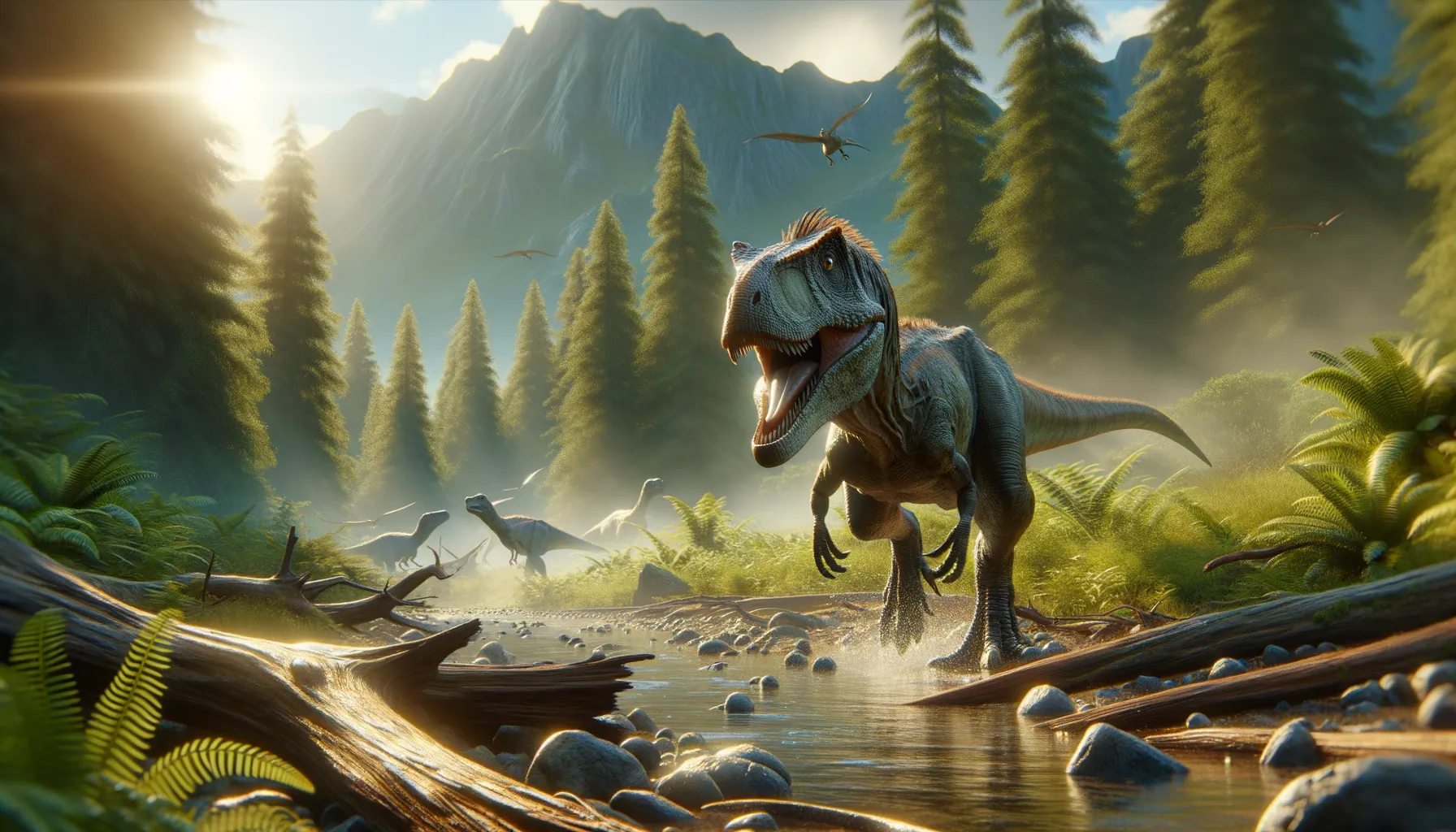
Moros
Swift and small, a tiny tyrant of its time.
Period
Cretaceous
Length
About 10 feet long.
Height
Around 4 feet at the hip.
Weight
Approximately 170 pounds.
Moros intrepidus is a small, nimble theropod that roamed North America during the Cretaceous period. Its discovery shed light on the early evolution of tyrannosauroids, helping to bridge the gap in the fossil record between smaller coelurosaurs and their giant tyrannosaur descendants. Despite its relatively diminutive size compared to later tyrannosaurs, Moros was likely a quick and agile predator, providing insight into the adaptive strategies that may have allowed its lineage to thrive.
Diet
Moros intrepidus, like many theropods, was carnivorous. It likely preyed on small vertebrates and possibly scavenged for food. Its diet could have included early mammals, reptiles, and other small creatures of its era.
Hunting
With its lightweight frame and agile limbs, Moros intrepidus was likely a fast hunter, relying on speed to catch prey. It may have used surprise and quick bursts of energy to capture smaller animals, making it an adept predator in its ecosystem.
Environmental challenges
Moros lived during a time of significant ecological transition as North America developed more diverse environments. It faced challenges such as climate fluctuations and competition from other predatory species. These environmental shifts would have impacted its food sources and survival strategies, requiring adaptability to thrive.
Speed
Swift runner due to lightweight build.
Lifespan
Lifespan details are not well-documented.
First discovery
Discovered in Utah in 2013, announced in 2019.
Fun Facts
- Moros was a small, agile dinosaur that lived approximately 96 million years ago during the Cretaceous period.
- It is one of the smallest tyrannosauroids known, standing about 3 to 4 feet tall at the hip.
- Despite its small size, Moros was closely related to the giant Tyrannosaurus rex, providing important insights into the evolution of tyrannosaurids.
- The name 'Moros' means 'doom' in Greek, referring to its role in the evolutionary path leading to large tyrannosaurids.
- Fossils of Moros were discovered in Utah, USA, indicating that the early relatives of T. rex lived in North America long before the arrival of the larger relatives.
- Moros had long legs, which suggest it was a fast runner, helping it to catch prey or escape predators.
- Researchers believe the discovery of Moros helps to fill a significant gap in the fossil record of early tyrannosauroids.
Growth and Development
Moros intrepidus likely experienced rapid growth phases similar to other theropods. Young Moros would have developed quickly to avoid predation. Understanding its growth also helps scientists estimate how such dinosaurs managed resource allocation and energy needs throughout their lifecycle.
Habitat
Moros inhabited a variety of environments, from coastal plains to river valleys, which were prevalent during the Cretaceous. Its adaptability allowed it to thrive in diverse landscapes that offered a range of prey. The presence of diverse flora and fauna would have contributed to its choice of habitat.
Interaction with other species
Moros likely coexisted with a variety of other dinosaur species. Its interactions with other dinosaurs could have included competition for prey with similarly sized carnivores. As a smaller predator, it may have avoided larger tyrannosaurids, engaging primarily with smaller animals.
Natural lifespan
Its natural lifespan remains largely speculative due to limited fossil records.
Reproduction
Like other theropods, Moros probably reproduced by laying eggs. Nesting sites were likely hidden or placed in safe locations to protect offspring. The reproductive behavior may have included parental care similar to that observed in modern birds.
Social behaviour
Moros may have exhibited solitary behavior, hunting alone to reduce competition for resources. However, evidence for social behavior in theropods is mixed, raising the possibility of loose group structures for hunting or raising young.
Fossil locations
Moros intrepidus fossils have been primarily found in the Cedar Mountain Formation in Utah, USA. These discoveries are significant as they provide insight into early Cretaceous ecosystems. The site has yielded numerous other dinosaur fossils, highlighting its importance in paleontological studies.
